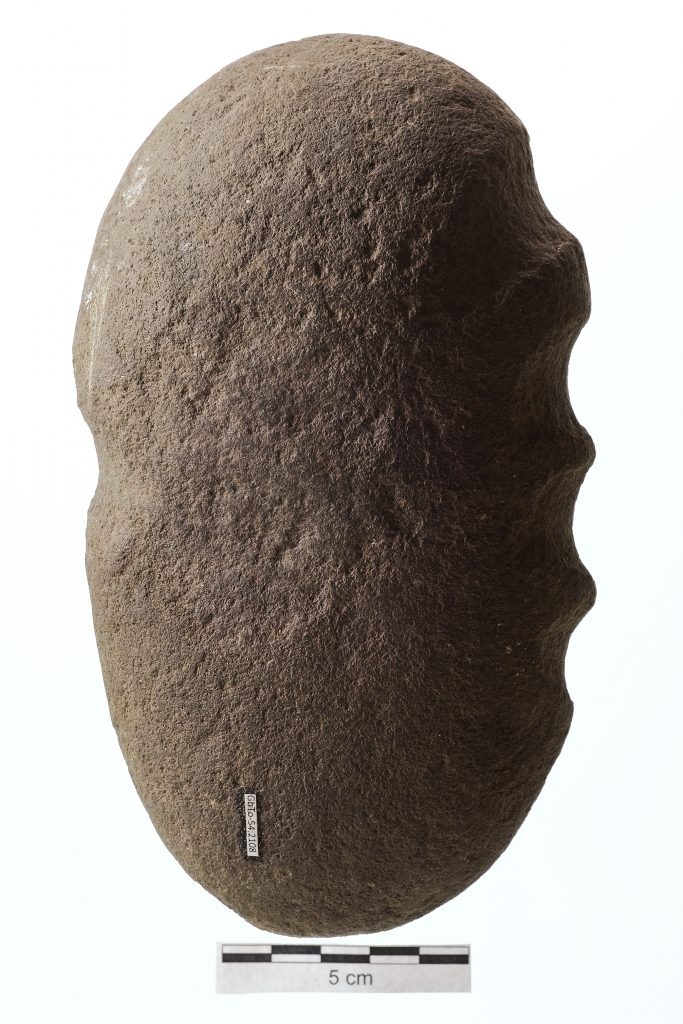Stone (not Brass) Knuckles?
OK, a brief respite from the harpoons; we’ll get back to those soon. “And now for something completely different”: this is yet another remarkable artifact from the 2012-13 Prince Rupert excavations. When you click on the image on the left for 3D, you’ll open a window where you can use your mouse to roll the artifact around. There are some other interesting things you can play with in the options. If you can’t see it at all, leave a note and we’ll upload a video showing both colour and grey-scale 3D images. Or if you like, check out the 3D video below!
The artifact is obviously made for a right-handed individual with big hands. It has a thumb groove and four finger grooves, with the index finger angled sharply upward. Holding it now gives you a remarkable and special feeling of having a direct connection with the hand of the Coast Tsimshian ancestor who made it for his grip (or maybe hers?) a thousand years or more ago.

The scan was made by Gordon Dudoward of Lax Kw’alaams using our NextEngine 3D scanner. Gordon, working in the Prince Rupert lab, learned all kinds of tricks to build great models that had eluded regular Millennia staff in the previous year of intermittent use. This is actually the low-resolution one!
The 3-D version shown here is grey scale; we couldn’t find a way to easily bring you the mapped colour textures which the NextEngine also produces. At the bottom of this page the artifact is shown in high-definition colour (and much more detailed than the scanner takes). Click on the bottom photo by Andrew Eckert (permanent Millennia staff member), and then use the “+” zoom button (doesn’t always work properly on iPad).
So what is it? Most guys seem to assume its a weapon when they see it and pick it up; women are much more likely to think it had some less violent use (that could be another blog entry….). The artifact has no wear at all on the ends, like hammerstones do, although there may be some wear on the face away from the palm-side (you can see the pitting on the 3-D). It seems unlikely that its a glorified hammerstone; why would so much work be made for a prosaic tool when you can pick up a hammerstone on the beach? And this seems to be unique; if it worked really well as a hammer, wouldn’t we find lots of other examples?
We can’t find any other analogous artifacts in Northwest Coast artifact assemblages or museum collections. The closest things are two-handed stone pile-drivers with pecked finger and thumb grips, used for pounding in stakes. Duff’s 1975 “Images Stone BC” book has photographs of four such pounders, two of them with indented grips (images 97-100). Duff describes as these objects as for pounding fish weir stakes. Probably they could be used for driving in poles to make drying racks, benches inside houses, and many other reasons people need stakes for.

Others are listed in museum catalogues; sometimes with specific reference to eulachon trap construction, but they seem very rare. The Prince Rupert object seems a little small for this purpose, but it is probably heavy enough to drive smaller stakes. If it’s not a weapon, its probably a one-handed pile driver?
